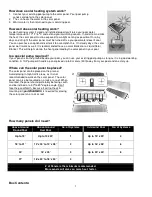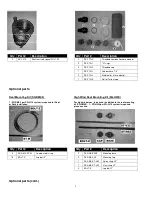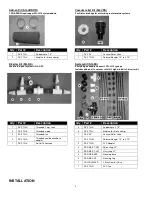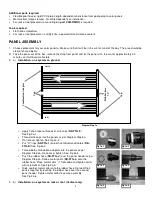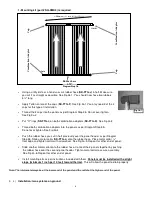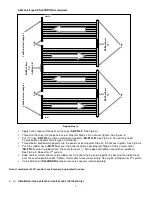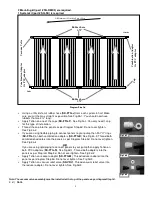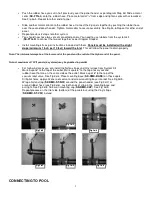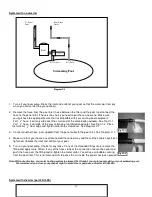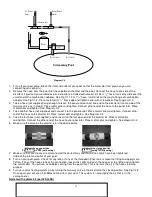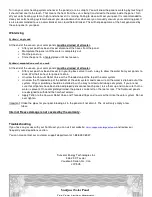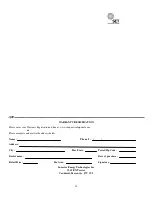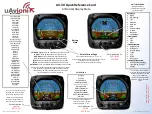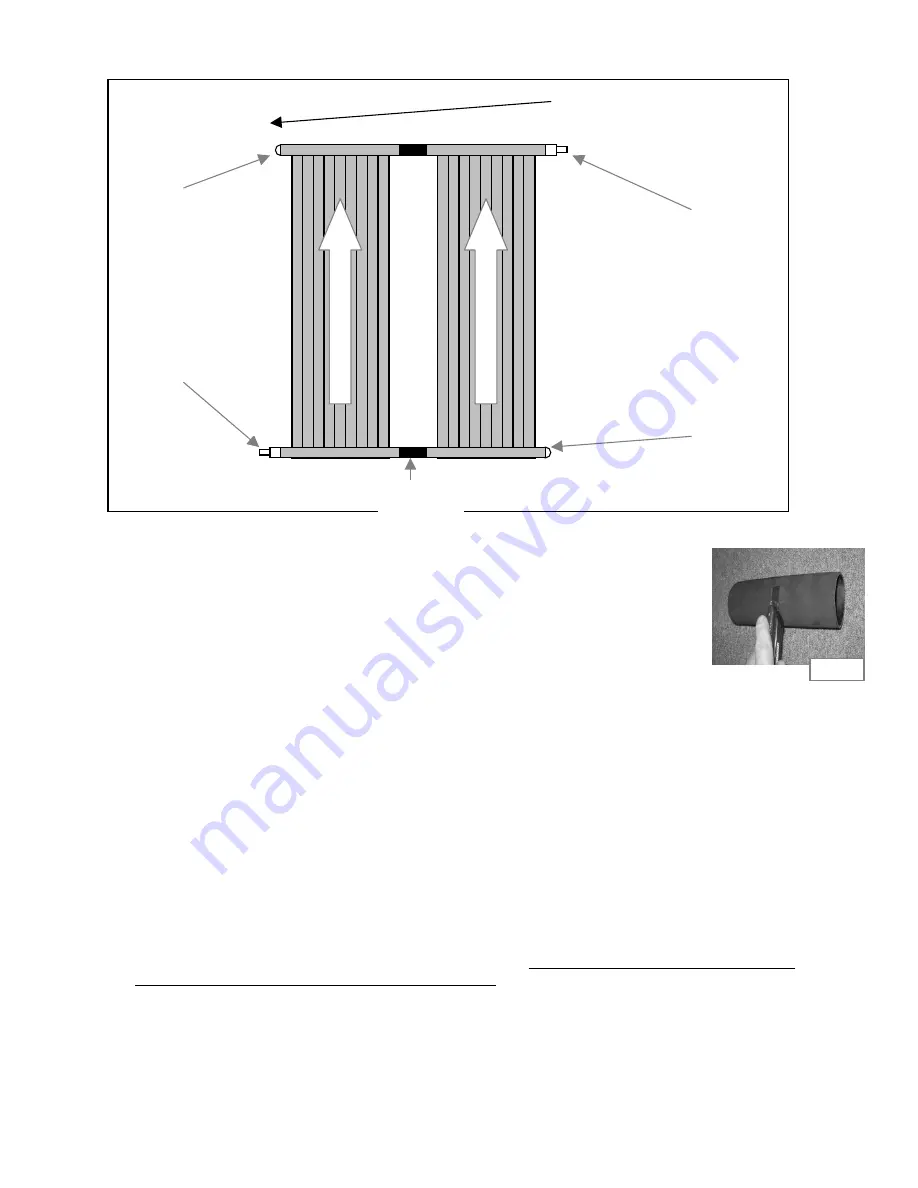
6
1 - Mounting kit (part # SQ-RMK5) is required
Diagram Step 3b
•
Using a utility knife or a hand saw, cut rubber hose (
SK-FTG-J
) in half. Make sure
you cut it as straight as possible. See Fig 3b-1. You should now have two rubbers
3 ¾" long.
•
Apply Teflon on two of the caps (
SK-FTG-F
). See Fig 3a-1.You only need 2 of the 4
caps for this type of installation.
•
Thread the 2 caps into the panels as per Diagram Step 3b. Do not over tighten.
See Fig 3a-2
•
Put "O" rings (
SK-FTG-I
) on both combination adapters (
SK-FTG-D
). See Fig 3a-3
•
Thread both combination adapters into the panels as per Diagram Step 3b.
Do not over tighten. See Fig 3a-4
•
Push the rubber hose you cut in half previously over the panel header as per Diagram
Step 3b. Slide a metal collar (
SK-FTG-L
) onto the rubber hose. Place metal collar
1
/
4
"
from edge and tighten collar with screwdriver. See Fig 3a-5. Repeat for other end of panel.
•
Slide another metal collar onto the rubber hose. Connect the 2 panels together by pushing
the rubber hose over the second panel header. Tighten metal collar to secure assembly.
See Fig 3a-6. Repeat for other end of panel.
•
Install mounting kits as per instructions included with them.
Panels must be installed with a slight
slope (minimum 1 inch per 10 feet) toward the inlet
. This will allow the panel to drain properly.
Note: The inlet must always be at the lower end of the panel and the outlet at the higher end of the panel.
3. c)
Installation: two systems on ground
.
C
o
m
b
in
a
ti
o
n
A
d
a
p
te
r
C
a
p
C
a
p
Rubber hose
3.75"
C
o
m
b
in
a
ti
o
n
A
d
a
p
te
r
Fig 3b-1
Inlet
Outlet
A Minimum of 1 inch fall per 10 feet


